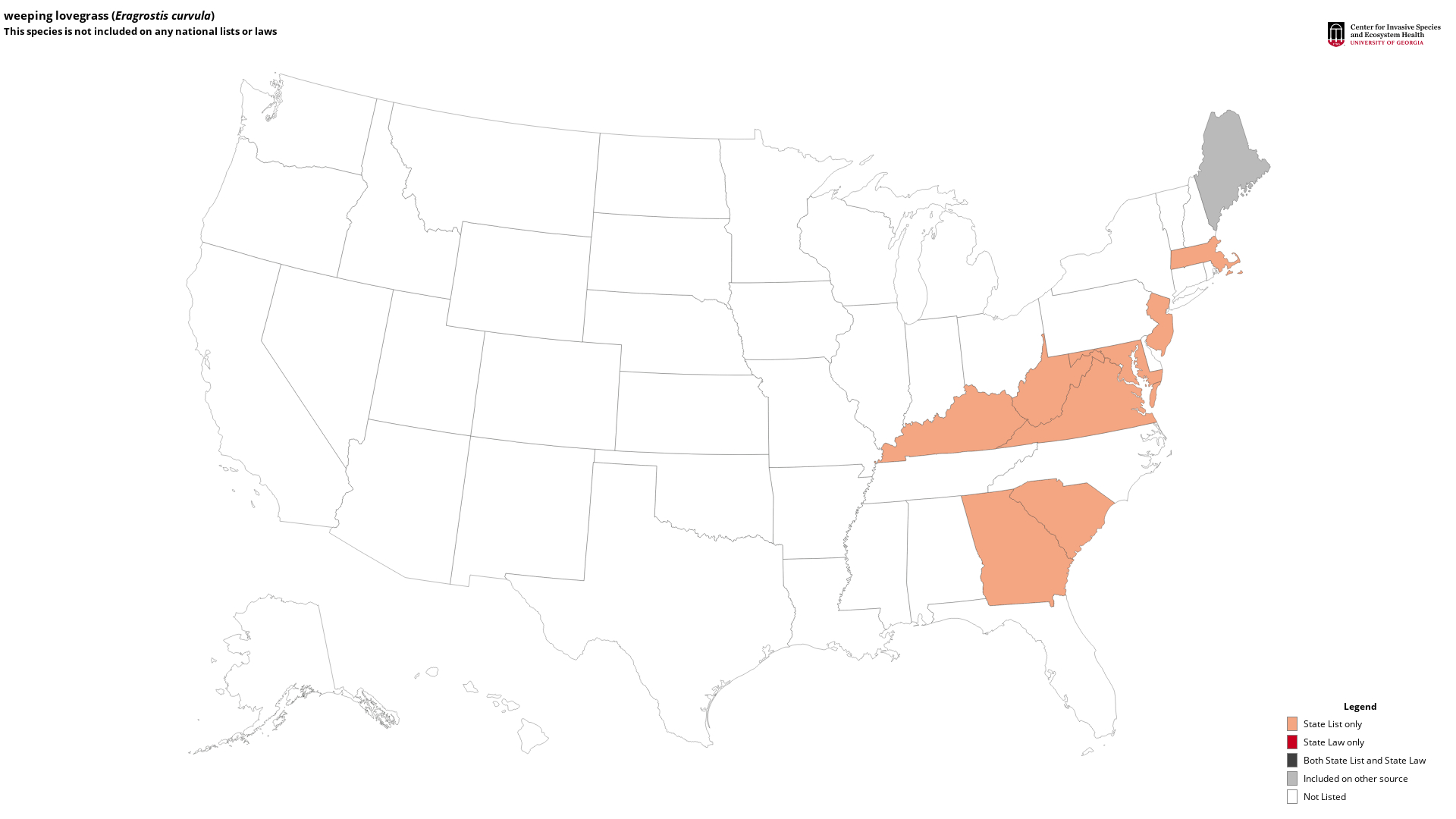| weeping lovegrass | USDA PLANTS Symbol: ERCU2 U.S. Nativity: Exotic Habit: Grass or Grasslike |
| Eragrostis curvula (Schrad.) Nees |
Jump to: Resources | Images | Distribution Maps | Sources
|
Taxonomic Rank: Liliopsida: Cyperales: Poaceae |
|
| Synonym(s): Boer love grass | |
| Native Range: Africa (); S. Africa (BAIL) | |
|
|
Identification, Biology, Control and Management Resources
|
| Selected Images from Invasive.org | View All Images at Invasive.org |
 Plant(s); habit Forest and Kim Starr, Starr Environmental, Bugwood.org Additional Resolutions & Image Usage |
 Plant(s); habit Forest and Kim Starr, Starr Environmental, Bugwood.org Additional Resolutions & Image Usage |
 Plant(s); habit Forest and Kim Starr, Starr Environmental, Bugwood.org Additional Resolutions & Image Usage |
 Plant(s); habit Forest and Kim Starr, Starr Environmental, Bugwood.org Additional Resolutions & Image Usage |
 Plant(s); habit Forest and Kim Starr, Starr Environmental, Bugwood.org Additional Resolutions & Image Usage |
 Plant(s); habit Forest and Kim Starr, Starr Environmental, Bugwood.org Additional Resolutions & Image Usage |
 Plant(s); Hitchcock, A.S. (rev. A. Chase). 1950. Manual of the grasses of the United States. USDA Misc. Publ. No. 200. Washington, DC. USDA NRCS PLANTS Database , USDA NRCS PLANTS Database, Bugwood.org Additional Resolutions & Image Usage |
 Seed(s); Steve Hurst, USDA NRCS PLANTS Database, Bugwood.org Additional Resolutions & Image Usage |
 Flower(s); inflorescence. Joseph M. DiTomaso, University of California - Davis, Bugwood.org Additional Resolutions & Image Usage |
 Stem(s); tuft of hairs at base of inflorescence branches. Joseph M. DiTomaso, University of California - Davis, Bugwood.org Additional Resolutions & Image Usage |
 Stem(s); collar and sheath. Joseph M. DiTomaso, University of California - Davis, Bugwood.org Additional Resolutions & Image Usage |
 Spikelet(s); Spikelet tip with two fertile florets still attached. Note that the brown caryopses can be seen through the ± translucent lemmas. D. Walters and C. Southwick, USDA, Bugwood.org Additional Resolutions & Image Usage |
| EDDMapS Distribution: This map is incomplete and is based only on current site and county level reports made by experts and records obtained from USDA Plants Database. For more information, visit www.eddmaps.org |
 State List This map identifies those states that list this species on their invasive species list or law. 
|










